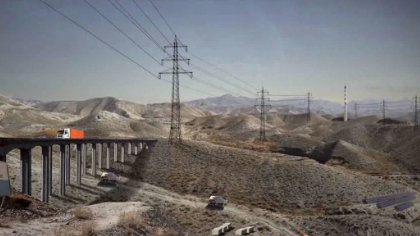The World Bank’s Interim Strategy Note (ISN) for the Islamic Republic of Afghanistan provides a sustained commitment and vision to the country’s development through the period of transition and beyond.
The ISN builds upon a solid track record of results, despite the high-risk environment. “Over the past decade, the World Bank, together with the international community, has helped the government make steady progress in many areas, including provision of basic services,” says Isabel M. Guerrero, World Bank vice president for South Asia. “These visible gains include the development and roll-out of national programs in health, education and village-level governance and service delivery, and a functioning and credible public financial management system.”
Managing a Critical Transition
Going forward, the Bank’s support to Afghanistan over 2012-14 will be based on supporting the delivery of some of the most important national priorities. It is also grounded in helping the government to manage the critical transition from security and development dominated by the international community to one led by the government of Afghanistan by the end of 2014. Bank group support will be provided around three themes:
- Building the legitimacy and capacity of institutions
- Equitable service delivery
- Inclusive growth and jobs
Specifically, the Bank will continue to expand its support to institutions and processes associated with transparent economic and financial management and community-level governance, especially through the National Solidarity Program (NSP). Equally important will be to sustain and expand, as possible, World Bank support for important national programs in areas such as healthcare, education, rural connectivity and irrigation.
The strategy will also help promote domestic sources of growth and jobs, which will be all the more critical as aid-driven growth decreases with the drawdown of the international military. Analysis undertaken by the Bank suggests that Afghanistan’s economy, which has been growing strongly at 9% per annum on the back of extremely high military and donor spending, may slow to some 5-6% as international assistance decreases.
Resource Corridors and Regional Cooperation
A key to identifying and sustaining sources of growth will be work around the concept of “Resource Corridors” which seeks to catalyze investments in Afghanistan’s huge natural resources in a holistic manner, linking up mineral resources, infrastructure, communities and employment-creating sectors in a way that provides growth and jobs beyond the borders of the mines. In addition, enhancing the connections between Afghanistan and its neighbors in terms of transportation, power and other infrastructure will be essential not only for the export of Afghanistan’s minerals, but will also help foster wider cooperation and trade in region.
Recognizing that transition and the ongoing conflict present a particular risk for women and girls in Afghanistan, gender issues will continue to be strengthened and mainstreamed. Within each activity the Bank will assess how it can be designed to most effectively help strengthen legitimacy, create jobs and support gender equality.
The Bank will deliver its program through International Development Association (IDA) grants, of which Afghanistan will receive about $150 million per year, and the Afghanistan Reconstruction Trust Fund (ARTF) which could potentially provide up to $800 million per year in grants during the period of the ISN. The ARTF, supported by over 30 bilateral donors, is the world’s largest single-country trust fund and provides on-budget support to major Afghan programs and reform efforts. The Bank’s private-sector arm – the International Finance Corporation (IFC) — will also strengthen its support to both private sector companies and improving the business environment.
Consultations with various stakeholders including public representatives, civil society, the wider donor community and the private sector went into the preparation of the ISN. The Bank’s program has helped deliver tangible improvements in the life of Afghans. At the same time, the strategy cautions that development faces daunting challenges, especially in a fragile environment, and so expectations need to be realistic as to what can be achieved in the near term.

